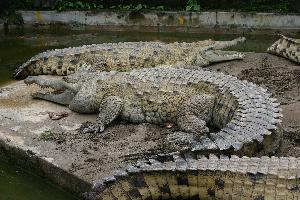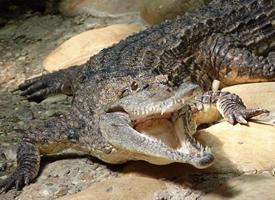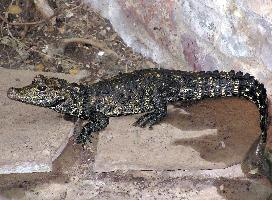
Greutăți și măsuri
| Lungime | False |
|---|
Starea de conservare
| Amenințat |
Descrierea animalului
The Orinoco crocodile (Crocodylus intermedius) is a fascinating and critically endangered species of crocodile found primarily in the Orinoco River basin in Venezuela and Colombia. This remarkable reptile is one of the largest crocodile species in the Americas, with males capable of reaching lengths up to 6.6 meters (22 feet), although such sizes are now rare due to overhunting and habitat destruction. Females are generally smaller, usually measuring around 3.5 meters (11.5 feet).Characterized by its light olive-green color, the Orinoco crocodile has a more streamlined body and a slightly narrower and longer snout compared to other crocodiles, adaptations that likely aid in its efficiency as an aquatic predator. Its eyes, ears, and nostrils are positioned on top of its head, allowing it to remain nearly submerged and undetected while stalking prey.
The diet of the Orinoco crocodile is varied, consisting of fish, reptiles, birds, and mammals. Juveniles tend to feed on smaller prey such as insects and amphibians. As apex predators, they play a crucial role in maintaining the ecological balance of their habitat, controlling the population of various species and thus helping to ensure biodiversity.
Breeding season for Orinoco crocodiles occurs during the dry season, when the female lays between 25 to 70 eggs in a nest made of vegetation. The nest's decomposing plant matter provides the necessary heat for egg incubation. After a gestation period of about 90 days, the hatchlings emerge and are often protected by their mother for several months, a behavior that is relatively uncommon among reptiles and indicates a complex social structure.
Historically, the Orinoco crocodile has faced numerous threats that have led to its current status as critically endangered. Overhunting for its valuable skin in the 19th and 20th centuries decimated populations, while habitat destruction due to agricultural expansion and pollution has further exacerbated the decline. Conservation efforts, including legal protection, captive breeding, and reintroduction programs, have been implemented in an attempt to save this species from extinction. Despite these efforts, the Orinoco crocodile remains at high risk, and its survival depends on continued and enhanced conservation actions.
The Orinoco crocodile is not only an important part of its ecosystem but also holds cultural significance for the local communities within its range. Its precarious status serves as a reminder of the fragility of biodiversity and the need for human stewardship of the natural world.
Harta răspândirii

Animale similare
Fotografii noi cu animale
Top 10 animale
- Dolphin gull (Leucophaeus scoresbii)
- Diana monkey (Cercopithecus diana)
- Moustached guenon (Cercopithecus cephus)
- Stone loach (Barbatula barbatula)
- Greek tortoise (Testudo graeca)
- Galápagos tortoise (Geochelone nigra complex)
- Japanese macaque (Macaca fuscata)
- Russian tortoise (Testudo horsfieldii)
- Common flying dragon (Draco volans)
- Galápagos penguin (Spheniscus mendiculus)


